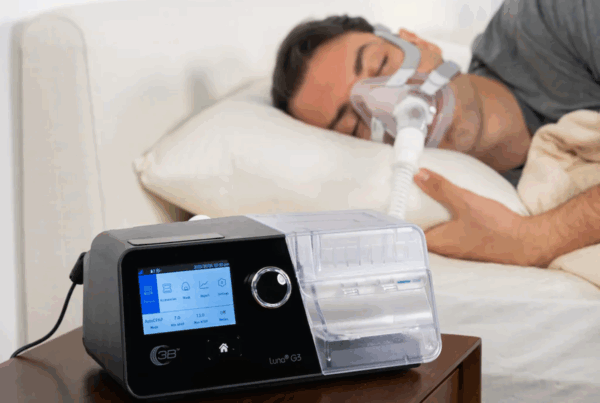Staying Safe and Prepared in Any Situation
At Alpine Home Medical, we understand that emergencies can happen when least expected — from power outages and severe weather to natural disasters or unforeseen equipment failures.
For patients who depend on oxygen therapy or home medical equipment, having a clear emergency plan is critical for safety, health, and peace of mind.
This guide will help you prepare for emergencies, stay connected with your providers, and ensure your medical needs are met even during unexpected events.
1. Develop a Personal Emergency Plan
Every home oxygen user should have a written plan for what to do if power, deliveries, or access to care are disrupted.
Your plan should include:
- Contact information for your physician, home medical equipment provider, and local emergency services.
- A list of all medical equipment you depend on, including oxygen concentrators, ventilators, or nebulizers.
- Backup oxygen supplies (such as cylinders or portable tanks) for at least 24–48 hours of use.
- Instructions for family members, caregivers, and neighbors on how to assist you if you are unable to operate your equipment.
- The location of alternate care sites or emergency shelters that can accommodate oxygen and electrical needs.
Tip: Keep a copy of your emergency plan in a visible location near your oxygen equipment and another copy in your emergency “go bag.”
2. Prepare for Power Outages
If you use an oxygen concentrator, a power outage can interrupt oxygen flow.
Steps to take:
- Notify your electric utility company that you use life-sustaining equipment — most offer a medical priority list for customers who depend on power.
- Keep your portable oxygen tanks or backup cylinders filled and ready at all times.
- Learn how to switch from your concentrator to your portable system quickly and safely.
- During an outage, turn off the concentrator to silence alarms and conserve energy.
- If the outage lasts more than a few hours, contact Alpine Home Medical for additional oxygen support or delivery assistance.
3. Backup Oxygen Supply Management
It’s vital to maintain backup oxygen supplies in case of equipment failure, travel disruption, or loss of power.
Recommendations:
- Keep enough backup cylinders to last at least 24 hours (preferably 48 hours).
- Store backup tanks in a cool, ventilated area away from heat sources or open flames.
- Regularly check pressure gauges to ensure tanks are full and ready for use.
- Notify Alpine Home Medical at least two business days in advance when supplies need refilling or replacement.
4. Communicate Your Needs in an Emergency
During emergencies, first responders and shelter staff need to know if you rely on oxygen or other medical devices.
Be sure to:
- Wear a medical alert bracelet or necklace that notes your oxygen use.
- Display a “Oxygen in Use” or “No Smoking” sign at your home entrance.
- Inform emergency personnel immediately about your equipment and oxygen needs.
- Keep a list of your current medications, oxygen prescription (LPM), and supplier contact information with your emergency documents.
5. Stay Informed During Severe Weather
Weather-related events like windstorms, flooding, wildfires, or extreme temperatures can impact your power and oxygen supply.
Prepare by:
- Signing up for local emergency alerts via text, radio, or TV.
- Having a battery-powered or hand-crank radio for updates if power or internet fails.
- Keeping your cell phone charged and a portable charger ready.
- Knowing the nearest emergency shelters and verifying which ones support oxygen and medical devices.
6. Equipment Care During Emergencies
Your equipment should always be in good working order — especially before a storm or potential outage.
Checklist:
- Inspect concentrators, tubing, and connections weekly.
- Clean air filters regularly to ensure maximum efficiency.
- Avoid using long extension cords or outlets controlled by light switches.
- Keep all equipment at least 10 feet from open flames, heaters, or stoves.
If your concentrator alarms or malfunctions, switch to your backup oxygen system and call Alpine Home Medical for service.
7. Transportation and Evacuation Tips
If you need to evacuate:
- Take your portable oxygen unit and backup supply.
- Bring a copy of your oxygen prescription and your supplier’s phone number.
- Pack essential supplies such as tubing, cannulas, and batteries.
- Keep a cool, dry bag or case for your portable tanks.
- If driving, secure oxygen cylinders upright to prevent them from tipping or rolling.
8. Important Contacts
Alpine Home Medical – 24/7 Support Line
📞 (888) 744-9525
📧 hr@alpinehme.com
Address: 132 E 13065 S #175, Draper, Utah 84020
In an emergency:
- Call 911 for immediate medical assistance.
- Notify your fire department that oxygen equipment is in use at your residence.
- Contact your power company if you experience an outage and are a registered medical-priority customer.
9. Emergency Supply Checklist
Keep these items ready at all times:
- Backup oxygen cylinders (minimum 24-hour supply) (4 tanks minimum)
- Extra tubing and cannulas
- Flashlights and extra batteries
- Portable phone charger or power bank
- Battery-powered radio
- List of emergency contacts and medication information
- First-aid kit
- Water and non-perishable food (3-day supply recommended)
10. Partnering With Alpine Home Medical
At Alpine Home Medical, we go beyond delivering oxygen; we ensure you have the knowledge, support, and equipment to stay safe in any situation. Our respiratory specialists are available to:
- Assist with personalized emergency planning
- Provide equipment training and safety education
- Offer 24-hour on-call assistance for oxygen emergencies
- Deliver additional oxygen tanks when needed
Your safety and peace of mind are part of our mission to promote comfort, freedom, and independence for every patient we serve.
Emergency Reminder
If you ever feel short of breath, dizzy, or confused or if your oxygen equipment stops working – switch to your backup supply and call 911 immediately. Then contact Alpine Home Medical for replacement assistance.














